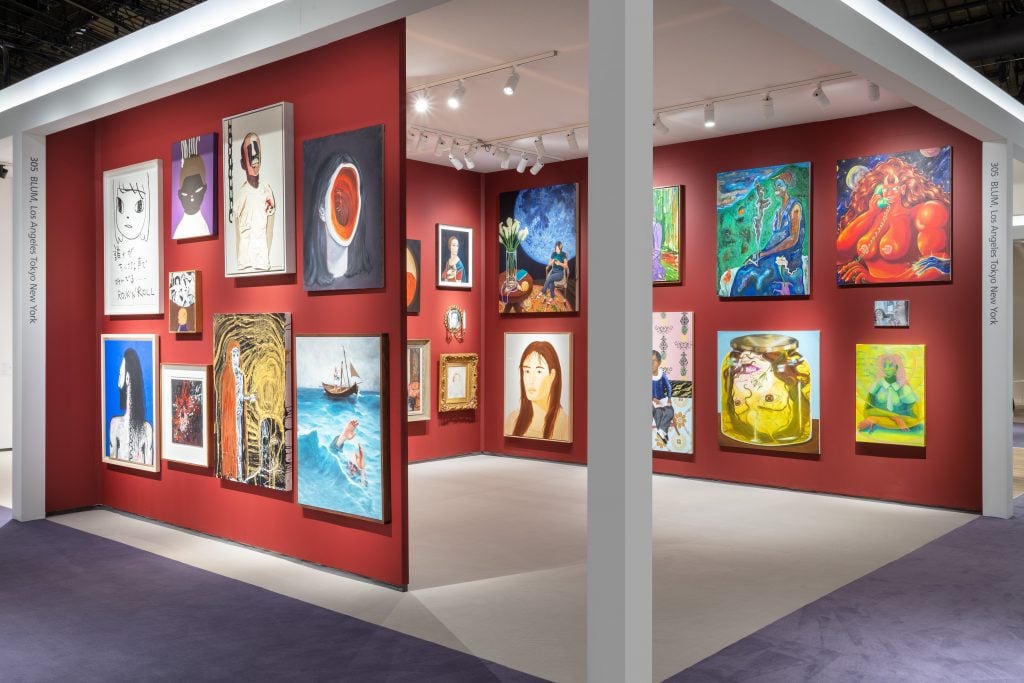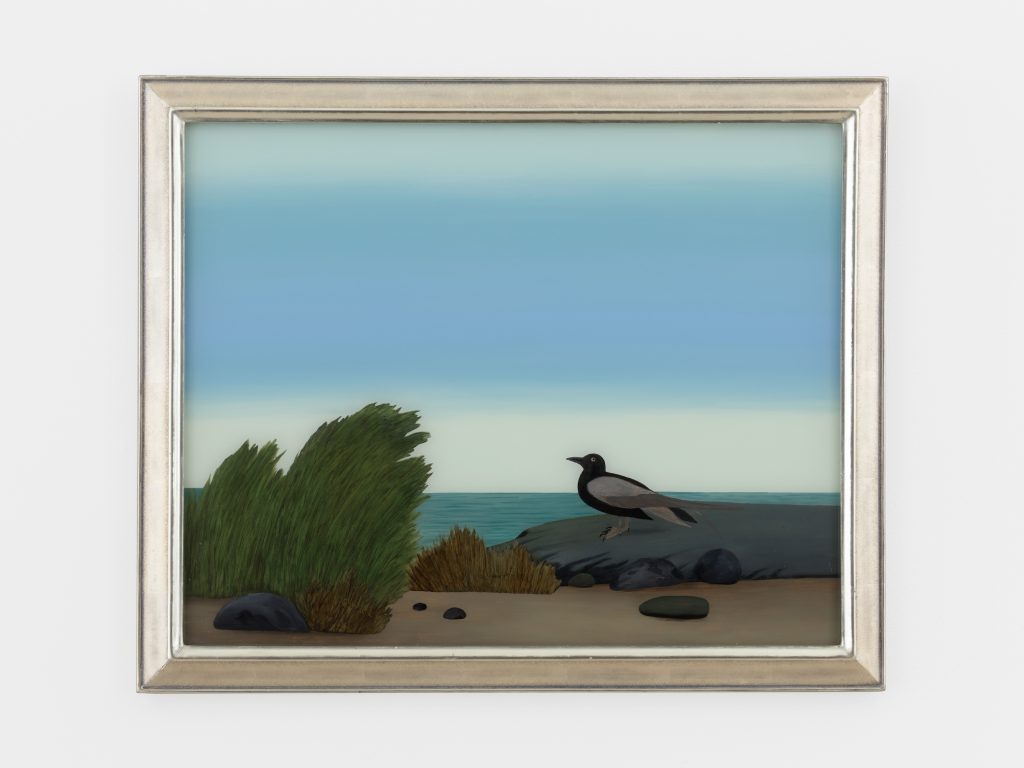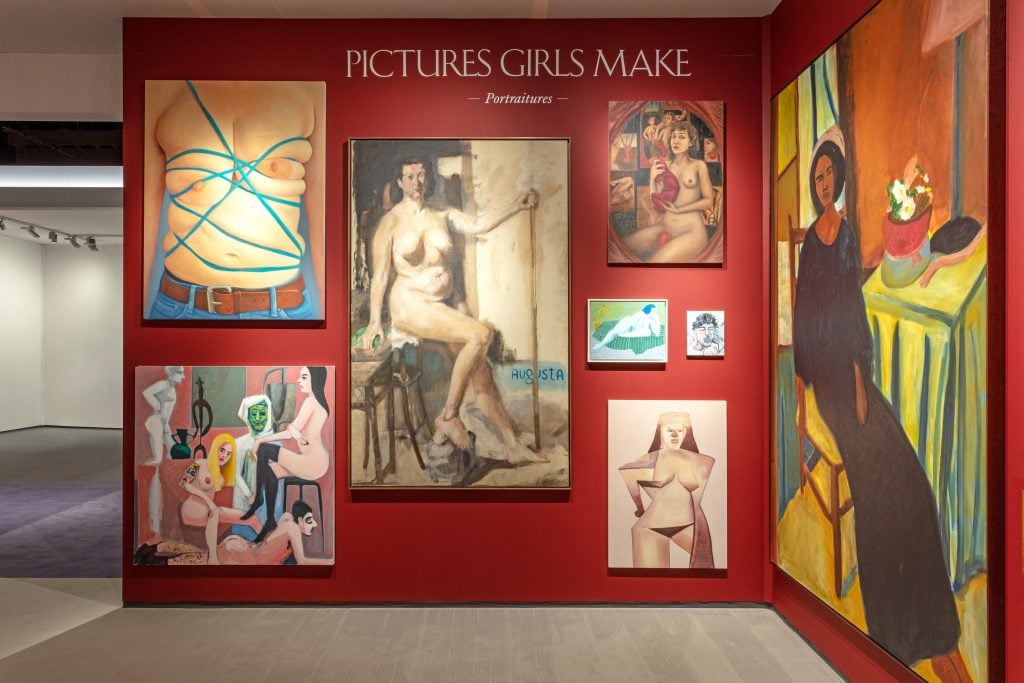Art Fairs
Rediscovered Gems and Famous Showstoppers Shine at TEFAF New York
The art fair has alighted once again at the Park Avenue Armory, and we've rounded up a few not-to-be-missed art moments.

TEFAF New York returned this week to the Park Avenue Armory with the expected hubbub and fanfare, replete with champagne bars, floral chandeliers, and smartly dresssed oyster shuckers mingling. With exhibitors nestled into the building’s period rooms as well as lined up within the monumental main hall, the fair is a ripe opportunity to discover something new or revisit an old favorite.
Parsing through the crowded aisles and booths, a number of presentations stood out from the rest. Below are just a few that you should be sure to seek out, with works by artists ranging from those underappreciated and primed for star-making moment to bonafide art market superstars.
Rebecca Salsbury James at Salon 94

Rebecca Salsbury James, Peace #3 (1951). Photo Elisabeth Bernstein. Courtesy of Salon 94, New York.
The paintings on view by self-taught American artist Rebecca Salsbury James (1891–1968) at Salon 94 are eye catching even from across the packed aisles of the fair. Unusually crystal clear and bright, the series of works are reverse paintings on glass, a technique her work has become synonymous with and exemplary of. Evocative of early Americana aesthetics, the sparse compositions convey a sense of poeticism through their deceptive simplicity, particularly in the landscape Peace #3 (1951). A close friend of Georgia O’Keeffe (James at one point taught O’Keeffe how to drive), the affinity between the two artists is palpable in James’s floral pieces, which have a similarly effortless air.
“Pictures Girls Make: Portraitures” at Blum

Installation view of Blum’s presentation at TEFAF New York 2024. Photo: Sebastiano Pellion. Courtesy of the artists and Blum, Los Angeles, Tokyo, New York.
Last year, Blum staged a much lauded group exhibition “Pictures Girls Make: Portraitures” at their Los Angeles location, and the gallery’s presentation at TEFAF New York is a continuation of the show, bringing it to an entirely new audience. Both curated by Alison M. Gingeras, the survey- and salon-style exhibit draws sharp focus on the genre of portraiture and, more specifically, breaks down outmoded assumptions of its boundaries and possibilities—making the argument that portraiture is “an enduringly democratic, humanistic genre.” Showcasing an expanded selection of artists, the booth marks the significance of the show and project within contemporary art historical discourses.
Kasmin

Installation view of Kasmin’s presentation at TEFAF New York 2024. Courtesy of Kasmin, New York.
Set within one of the Armory’s historic, parquet floor rooms, Kasmin’s atmospherically lit presentation is a veritable jewel box of modern and contemporary art. Standouts include an immense, winged bronze sculpture by Alma Allen (ahead of his solo show with the gallery later this month), a bucolic landscape painting by Jane Freilicher, a series of Agnes Martin drawings, and several nature-inspire sculptures by Claude and François Lalanne, to name just a few. Together, the gallery’s presentation is a testament to the dialogues and throughlines that can be uncovered between otherwise seemingly disparate artists and artworks through thoughtful selections and juxtapositions.
Roger-Edgar Gillet at Petzel

Roger Edgar Giller, Portrait de Dorian Gray (1969). Courtesy of Fonds Roger-Edgar Gillet and Petzel, New York.
French painter and printmaker Roger-Edgar Gillet (1924–2004) is an artist long overdue for a reevaluation and revival. Coinciding with the centenary of the artist’s birth, the solo presentation of Gillet’s paintings at Petzel’s booth allows for an up close and personal look at the artist’s distinctive use of impasto and gesturalism. Although the technique ultimately warps and distorts his subject matter, it in turn adds an emotional, psychological element to the work. Among the post-war generation of French painters and a part of the Second School of Paris, his oeuvre fits seamlessly within the context and trajectory of 20th-century Modernism and recalls the work of contemporaneous artists such as Jean Dubuffet and Jean Fautrier.
Claude and François Lalanne at Galerie Mitterrand

François-Xavier Lalanne, Oiseau de jardin à bascule (1974). Photo: Aurélien Mole. © François-Xavier Lalanne. Courtesy of the artist and Galerie Mitterrand, Paris.
Claude and François-Xavier Lalanne’s whimsical, nature-inspired works have always been popular, but nevertheless have been the subject of a distinct resurgence of interest over the past few years, marked by increasing market demand, a recent major solo gallery show, and again with a feature of the duo’s inimitable pieces in a solo presentation at Galerie Mitterrand’s booth. The gallery has represented “Les Lalanne” since 1988, and the quality of the exhibited selection reflects their close working relationship, which is centered around a true masterpiece by François-Xavier Lalanne: Oiseau de Jardin à bascule (1974). Playful and poetic, the sparrow shaped rocking chair showcases the artist’s technique of welding hammered metal sheets, which is prevalent in much of the work produced in the 1960s and ’70s, including the iconic Rhinocrétaires (1966).





